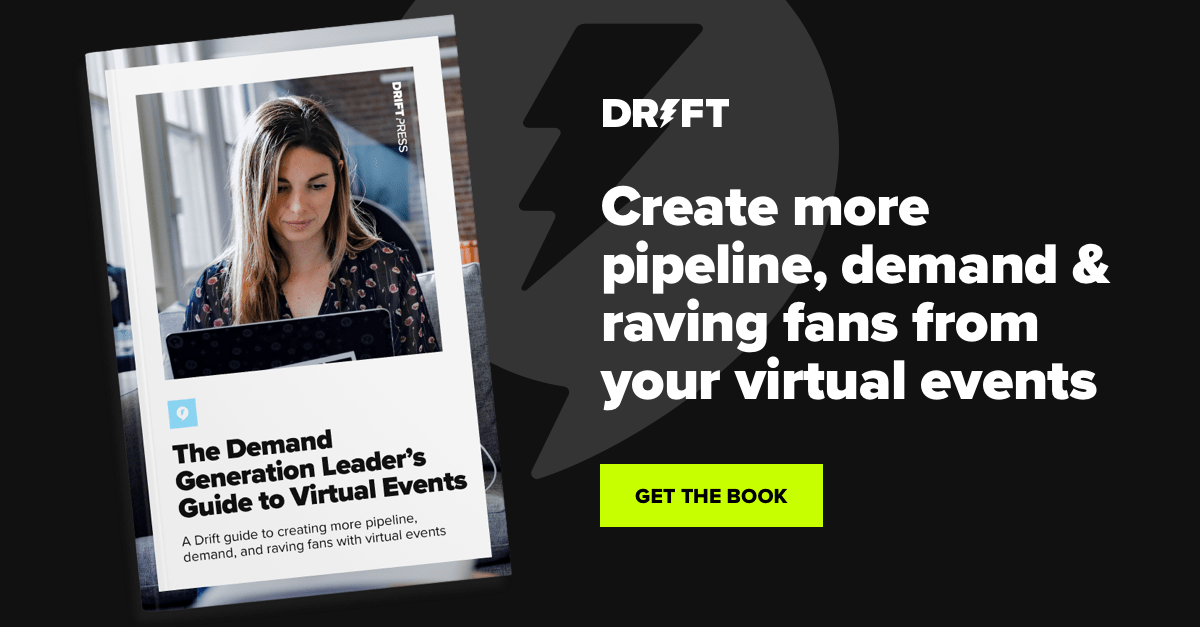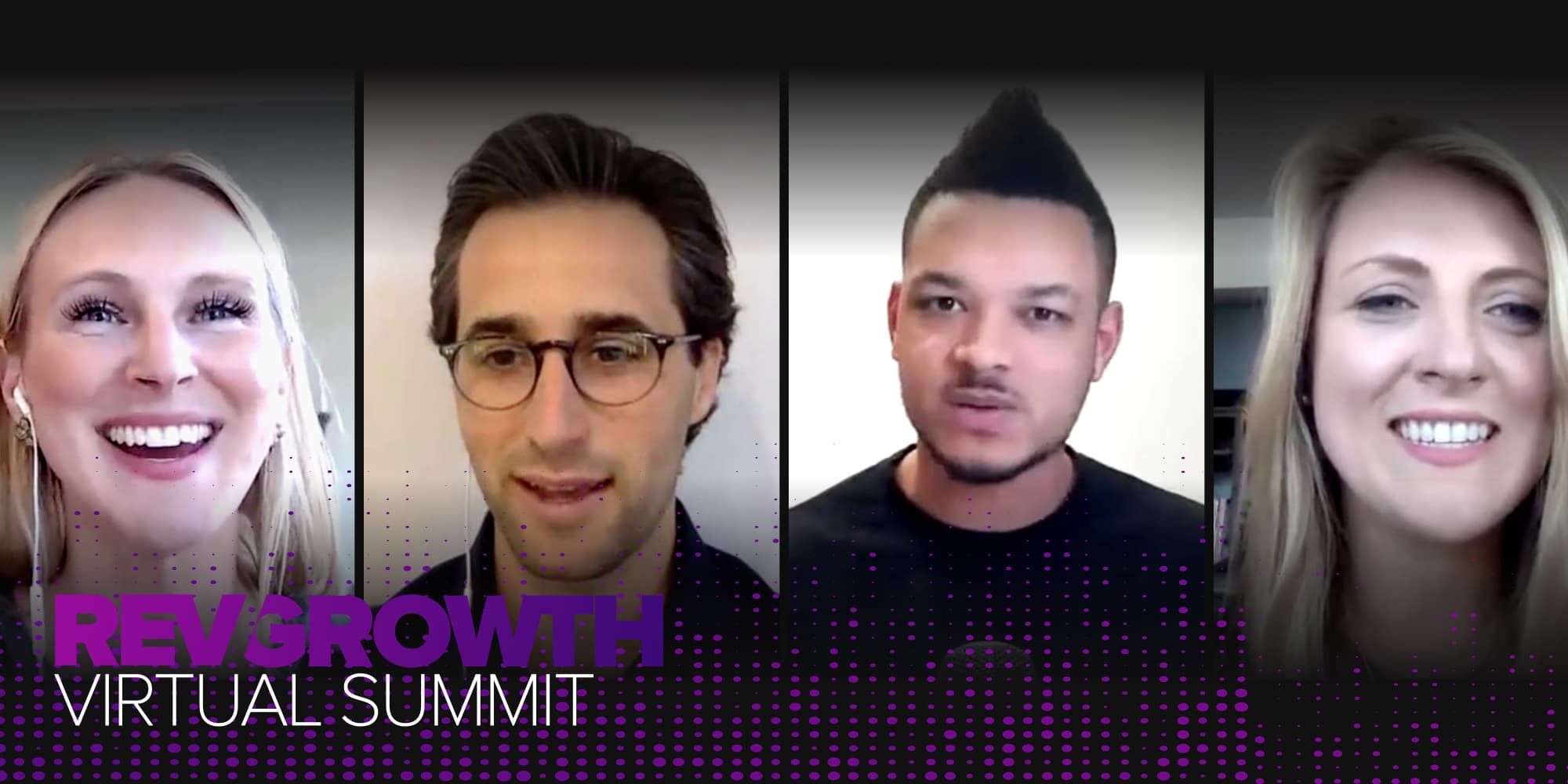I don’t know many little kids who say, “I wanna be a marketer when I grow up!” It’s not like being an astronaut or a nurse or a firefighter.
But I’ll tell you why I did. It’s because I love creating those magic moments between our brand and our audience. You know the ones – that “aha” moment. The surprise and delight.
That’s why I loved our in-person events. They were the perfect avenue for these aha moments. But this year, in-person events were canceled. Because of COVID-19, we could no longer gather in-person, chat at a trade show booth, swap business cards, or bond over happy hour. The switch to digital events accelerated, and I know so many event marketers worried about how to embrace digital events at scale. How can you possibly replace that immersive, sensory aspect of in-person events? (And oh yeah, hit your goals along the way?)
Making the switch from physical to digital isn’t easy.
But remember: if you can coordinate a vendor canceling at the last minute, dropping a hundred cupcakes the morning of an event, a no-show presenter, blizzards, and whatever else event planning over the years has thrown your way, you can do this.
I’m here to break it down into some very simple steps – what I call the 4 T’s – so you can continue to drive amazing digital experiences for your customers and prospects in this new normal.
A Digital-Only World Means a Digital-Only Buying Journey
The way we do business is different now. Digital is the only way business gets done.
With a digital-only world, you have to completely rethink the entire buyer’s journey.
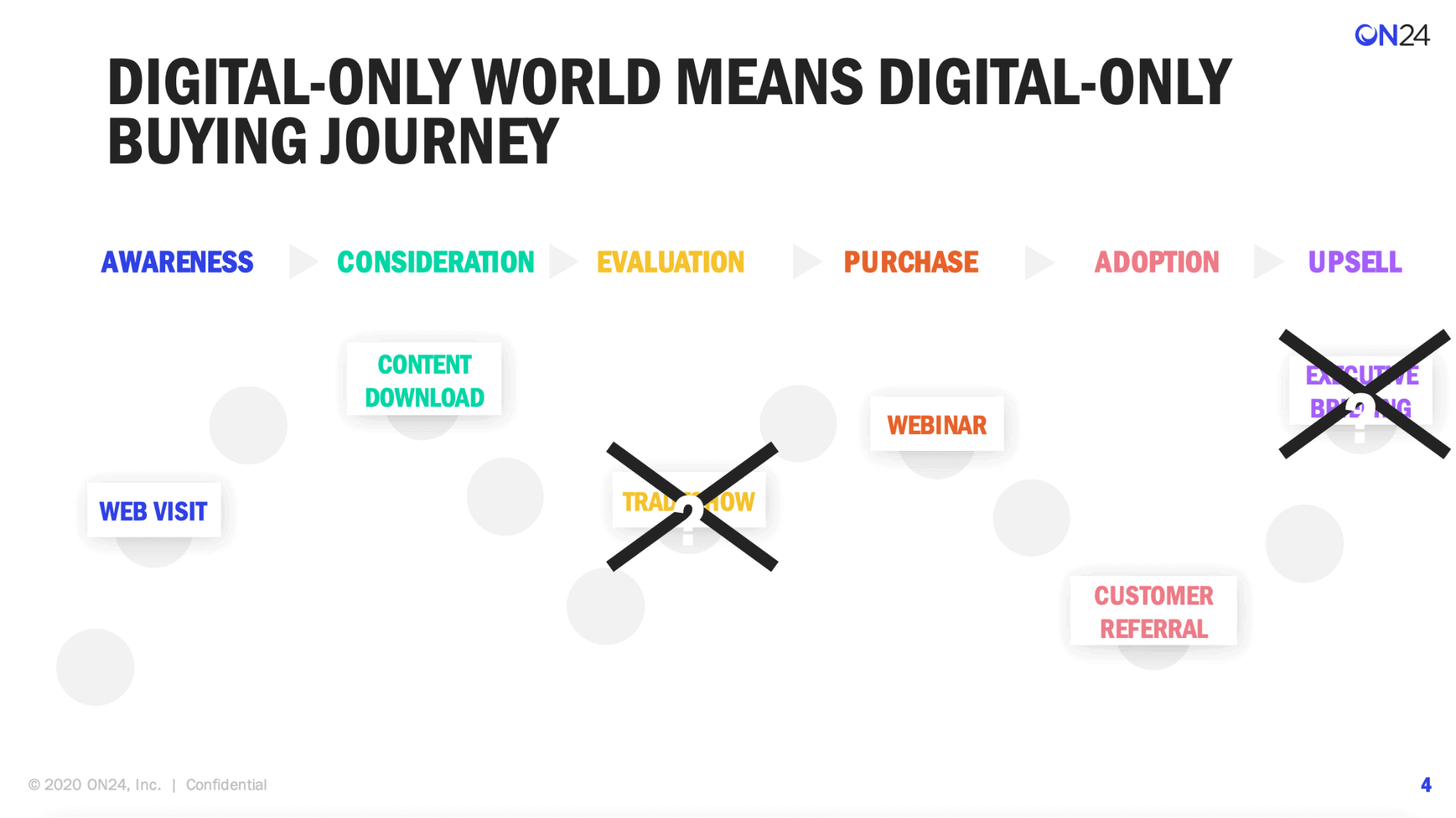
Forrester says buyers average 17 meaningful interactions before they make a purchase. Whether the interactions are digital or in-person, you still need to drive engagement to move prospects through the funnel.
You can’t depend on digital marketing to seed breadcrumbs that lead to an in-person event.
The digital realm is the engagement.
Physical and digital events still have a lot in common.
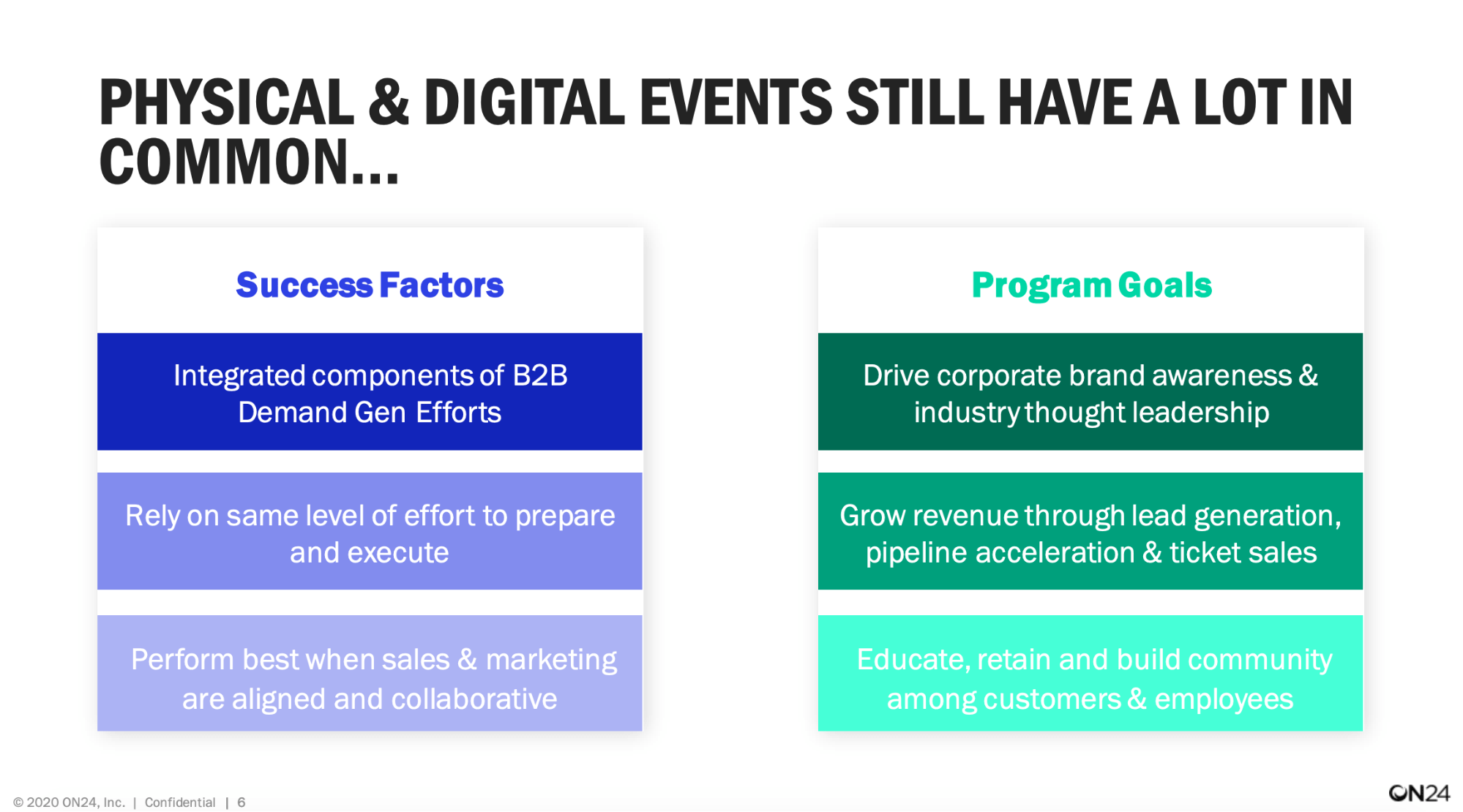
Whether they’re single webinars or multi-day virtual conferences, the goals remain the same:
- Drive corporate brand awareness and industry thought leadership
- Foster engagement with your customers and prospects
- Grow revenue through lead generation, pipeline acceleration, and ticket sales
- Educate, retain, and build community among customers and prospects
It’s just that the tactics and channels you use to promote, execute, and gather value might look different.
The 4 T’s of an Awesome Digital Event
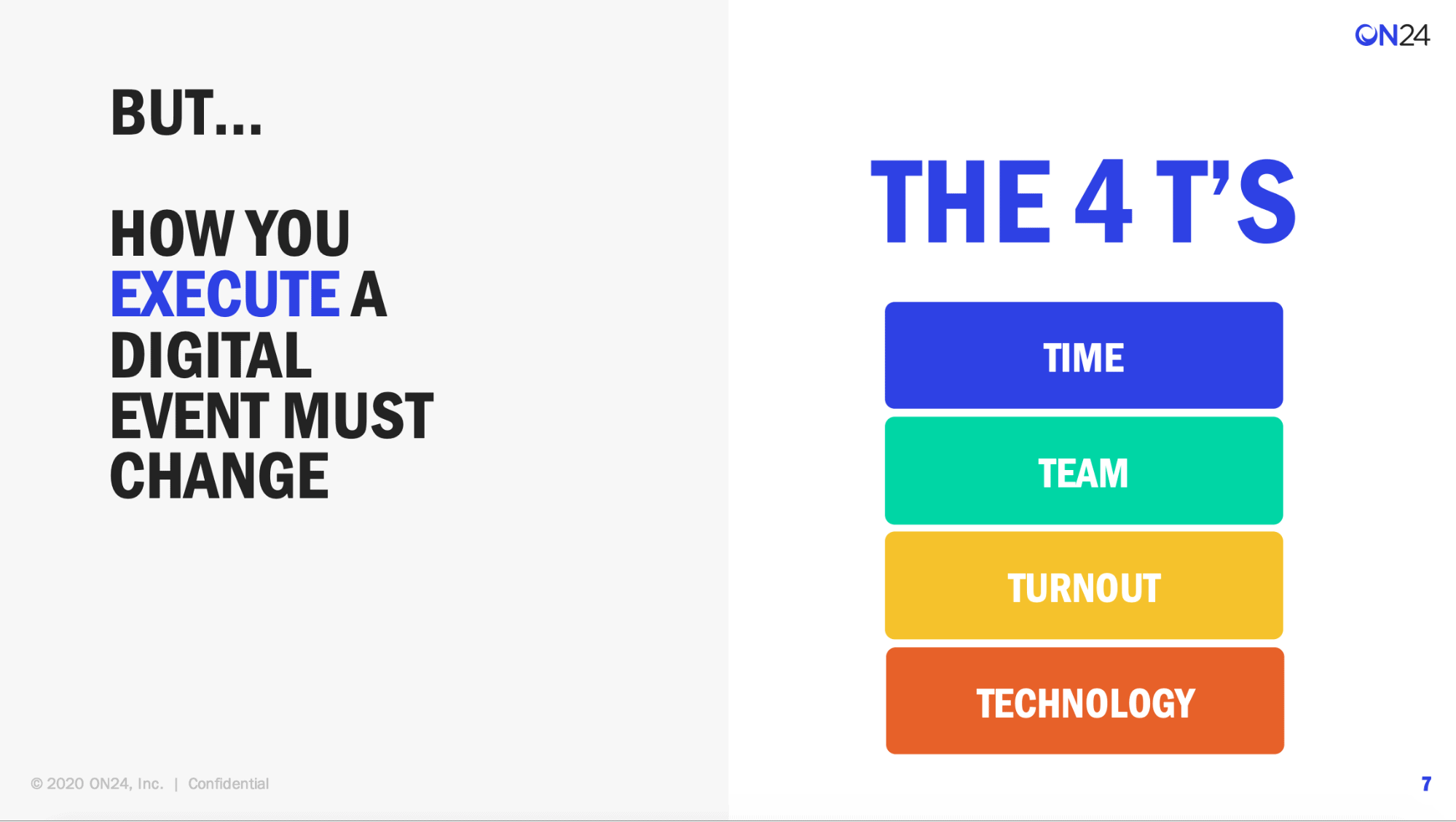
People throw the words “digital transformation” around a lot today.
But I think the term has a lot of relevance when it comes to rethinking your physical events.
It’s helped me reframe how I translate an in-person event to a digital one. You can’t drag-and-drop every element. You need to transform what an event looks like for it to be successful.
How do you give the buyer the same kind of feeling and human connection they would have experienced in person? That’s where the 4 T’s come in:
- Time
- Team
- Turnout
- Technology
These are the basic changes that you need to make when you’re starting to think about a digital event versus a physical one.
Time
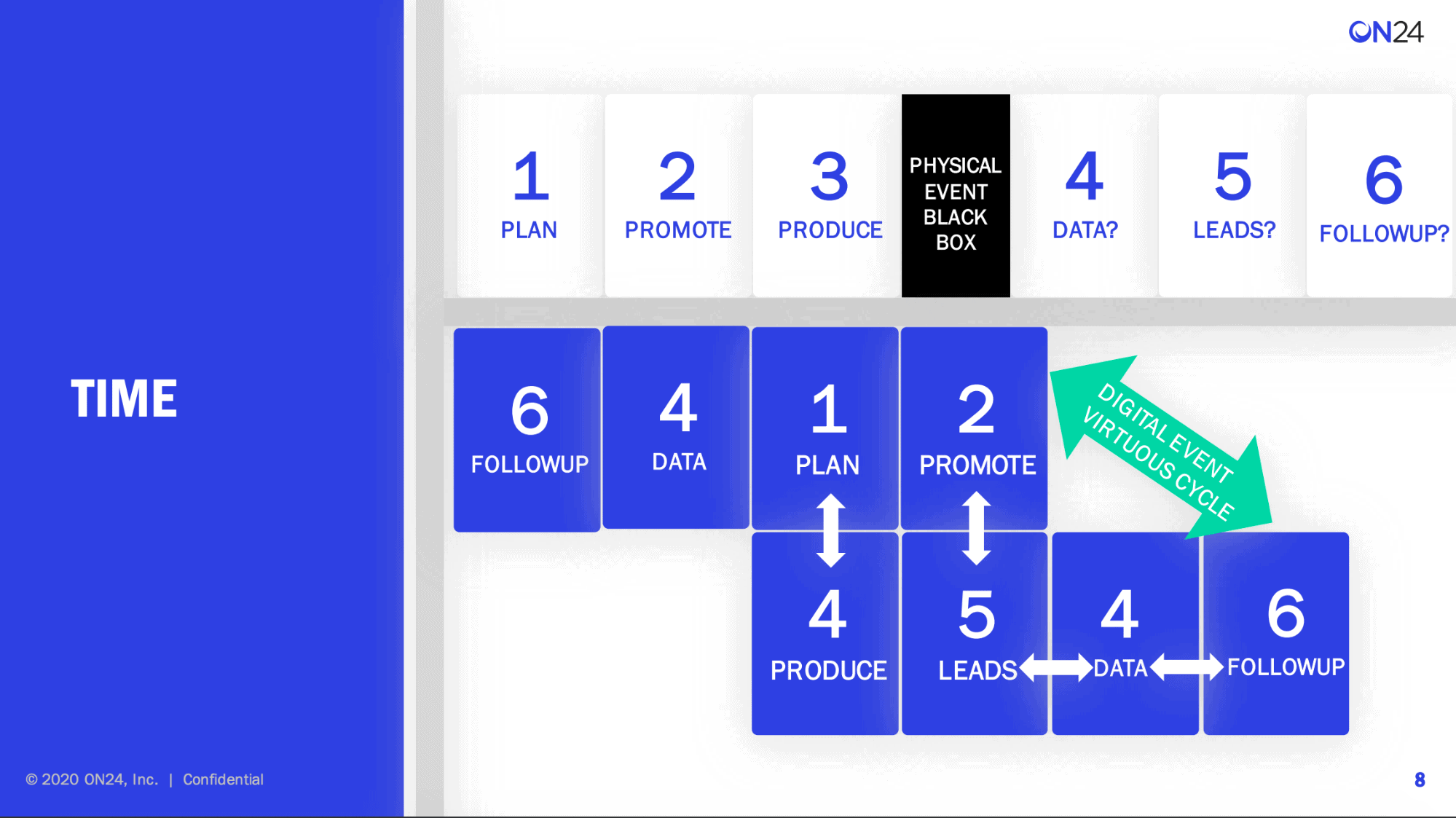
Physical events unfold in a sequential, linear fashion – event design, agenda planning, content creation. When you’re planning a digital event, you need to start with the end in mind and consider the entire journey from promotion to follow-up before the event even occurs.
The best thing you can do is begin by identifying your goals and develop a clear workback plan. Ask yourself:
- What pre- and post- action are you trying to drive?
- How will you get data to enable that action?
- What’s your always-on strategy?
From there, you have to simultaneously create the content, create the promotions, and start promoting the event. Often, plotting out pre- and post-event lead nurture programs for virtual events requires more upfront discussion with sales to identify the criteria for an ideal lead.
Not only is the planning timeline different, but the event time is different, too. With digital events, the timeline doesn’t stop. The value you produce can go on forever, because even if someone registers and doesn’t attend (hey, we’ve all done it), that’s your opportunity for a follow-up.
Team
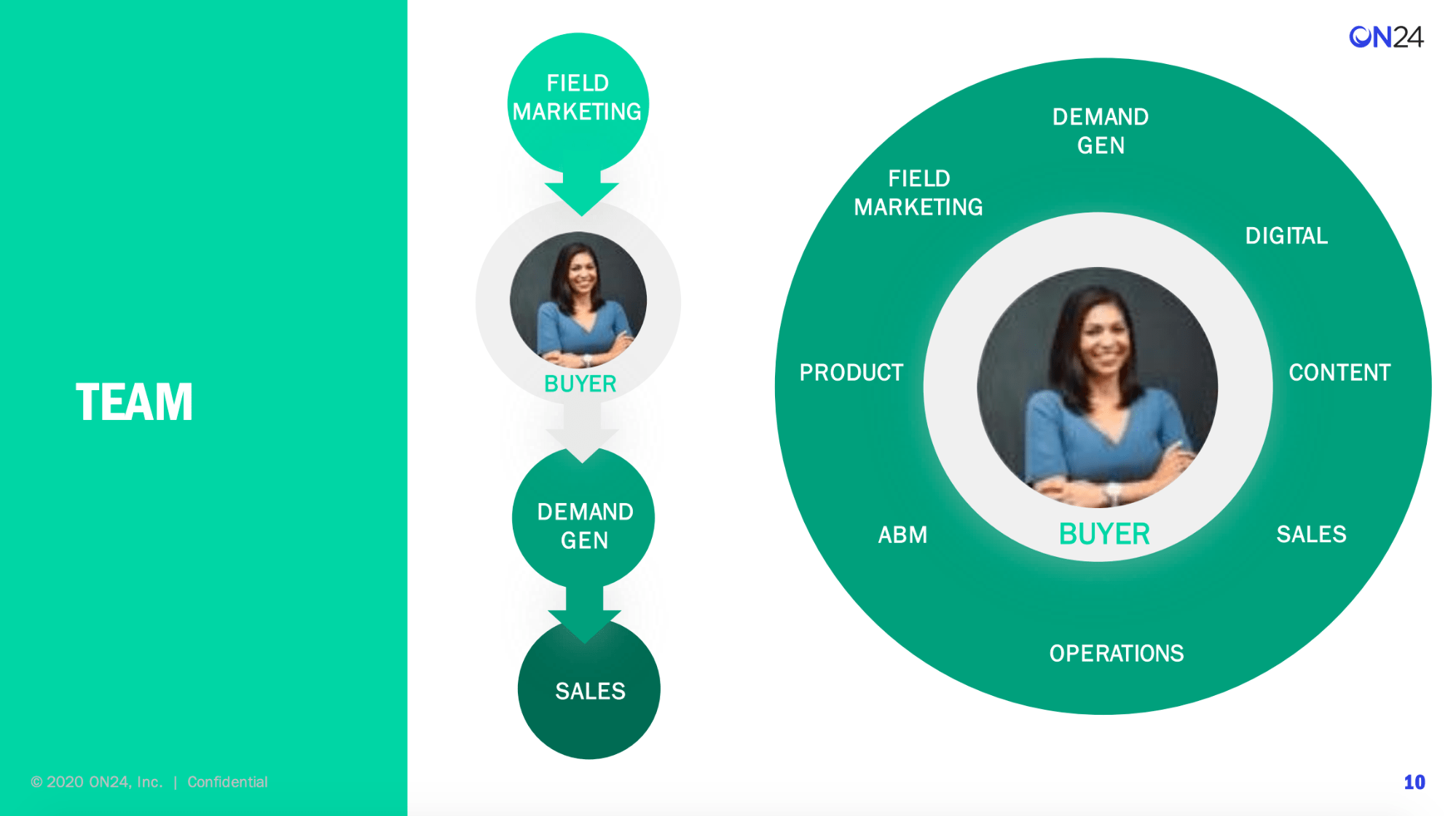
Most event teams operate separately from the rest of the marketing team. That’s easy when it’s a field team responsible for coordinating specific events and executing them in a region.
With digital, you have to work together cross-functionally, since your buyer will be immersed in all of your digital channels at once. You’re all in this together.
Executing a digital event at ON24 literally involves everyone:
- Content creates the material
- Digital promotes the experience and gets new prospects to attend
- Demand Generation drives conversion and segmentation
- Sales Enablement preps the sales team for follow-up
- Product provides their expertise and speakers
- ABM targets specific accounts
- Operations organizes leads and tracks performance
- Sales and CRM follow up
Where does that leave you? Event or field marketing coordinates every piece of the puzzle, bringing together each team and making sure the event planning goes on time and on budget.
To put the buyer at the center of your digital event experience, you need all hands on deck. Ask yourself:
- How does your event integrate with campaigns?
- Do you want to acquire or engage?
- What are your event KPIs to be shared?
Turnout
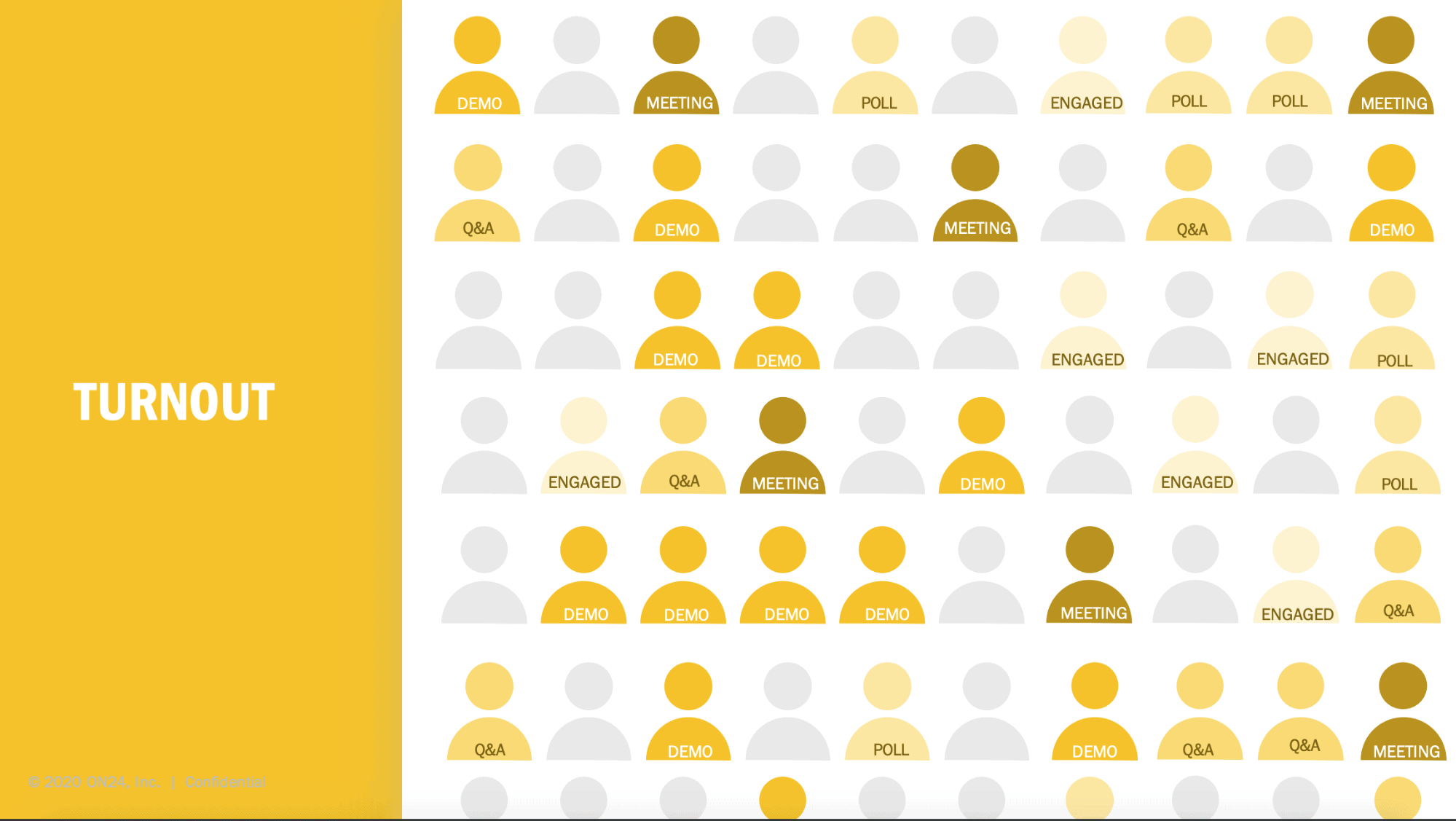
In-person events had limits for attendees. (At some point, the fire marshal will step in.)
But with digital, you can invite hundreds or thousands of people with the right technology.
Are you ready to handle that amount of leads?
The worst thing you can do is turn on your digital event engine and flood your sales team’s inboxes with leads they don’t know what to do with. They need to know who’s worth their time, who’s interested in which products, and why, so the sales team can strike up a conversation with the right accounts.
Look at your audience and how they engaged with you at your event to determine where to go next. Create a multi-level prioritization matrix that charts:
- Who raised their hands and asked for a demo
- Who asked a question
- Who attended the entire event
- Who answered a poll
These are all examples of attendees who already showed you they were interested. They’re providing inquiry or showing a pain point.
Your sales team needs to know how attendees engage with you so they can continue the conversation rather than start over cold, especially at the volume a digital event can provide.
You need to understand your attendees and what they’re interested in. Ask yourself:
- How will you qualify thousands of leads?
- How do you know who’s ready to buy?
- How do you prioritize leads for follow-up?
Technology

A digital event is different from a meeting. So why do so many marketers use the exact same technology?
Creating a multichannel experience that gives the buyer the opportunity to be nurtured, engaged, and converted is not going to happen through a PowerPoint presentation.
You need to enable the buyer to explore on their own terms, just like you would in a physical environment. Give them the opportunity to opt-in, raise their hand, ask questions, virtually swing by your booth. Allow them to pick up swag to deliver to their door. Why not? They love it.
You don’t have to miss out on your favorite parts of an in-person event. Integrate it.
Make it come alive and give your attendees opportunities to engage with two-way conversations in a multimedia experience. Just because an event is happening live doesn’t mean you can’t integrate other content, like video.
The best part about a digital event is that you can keep the experience going as long as you have the technology that supports you. You can continue driving your buyer down the funnel and take advantage of the digital scale and multichannel interactivity made possible with a virtual environment.
Ask yourself:
- How will you operationalize insights?
- How will you create real-time conversion?
- How will your event remain interactive?
With a digital event, if it’s the right technology, you can literally share that experience and keep your results ongoing forever.
No Matter What, It’s About the Human Experience
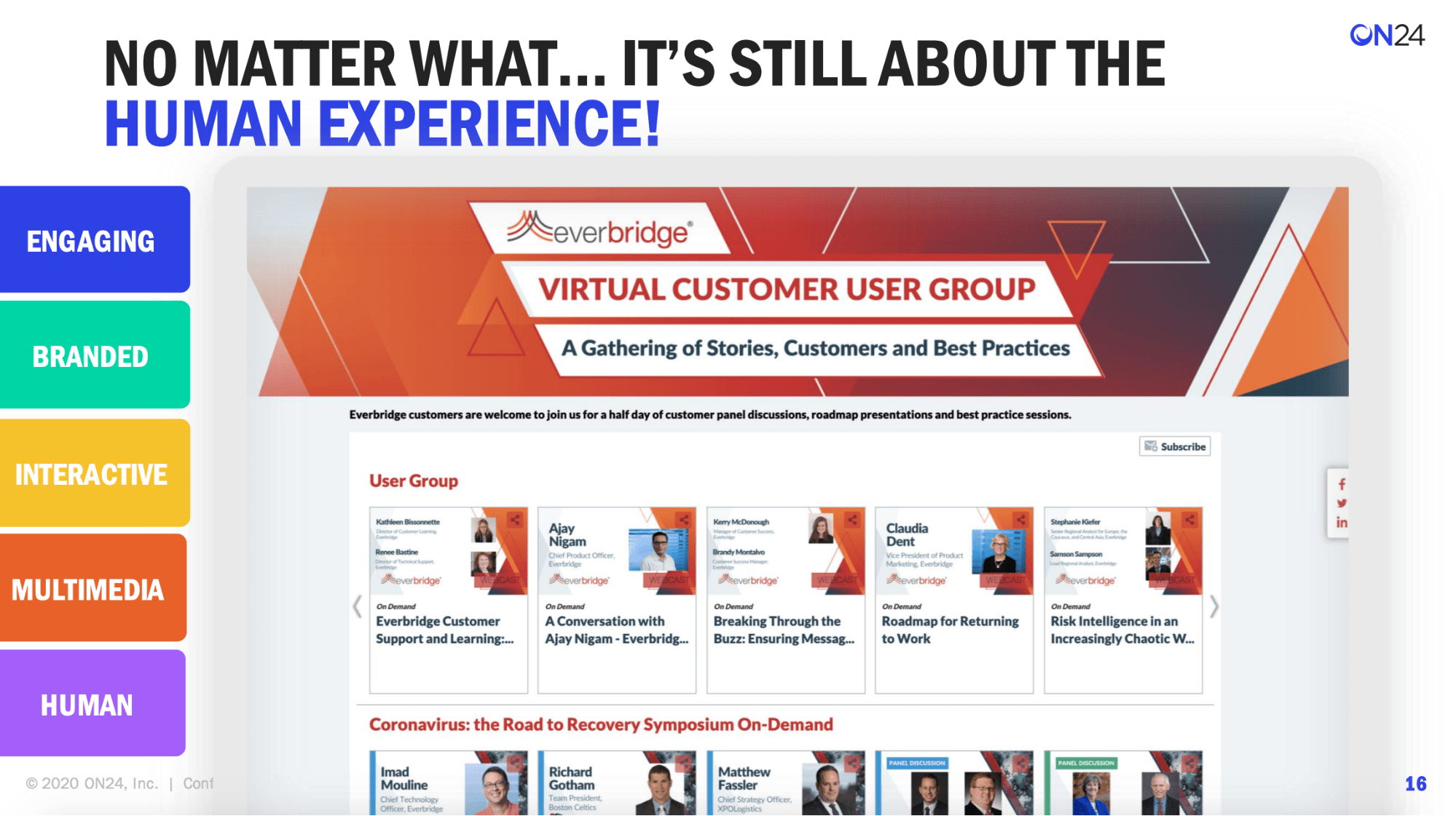
At the end of the day, events are still all about the human experience. That’s why we’re here – to create that human-to-human connection.
We’re all in the same situation, working from home, unsure about what comes next. Even though we can’t all meet in person, your digital events can still create a sense of connection.
Now is the time for empathy and community more than anything. You can create an awesome experience that your audience will remember – whether you meet in person or not.





